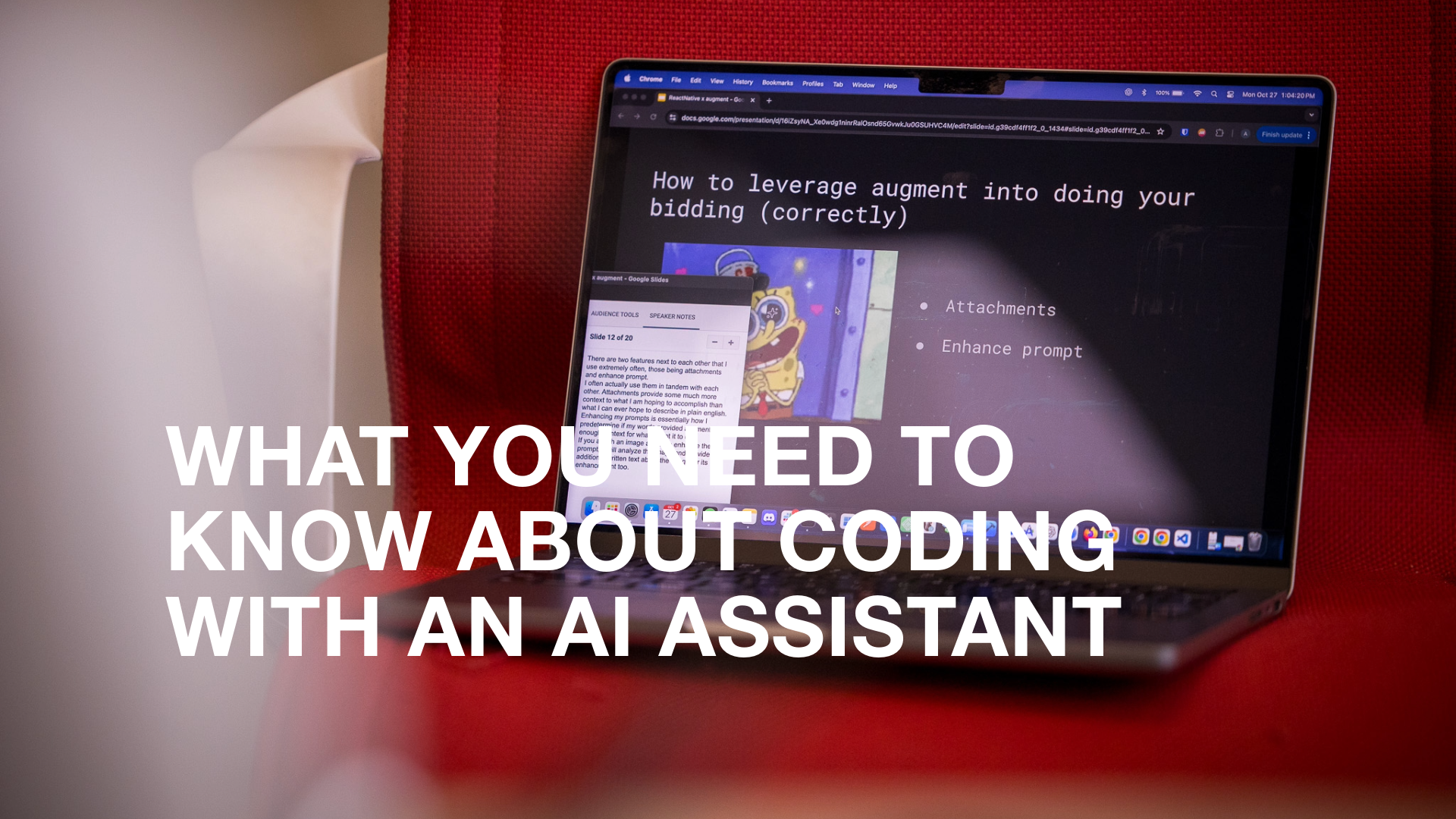Many of the Future of Work conversations discuss the importance of learning new skills. The driver for this is that more and more traditional roles and work will become obsolete due to automation.
One of those new skills is software development. Depending on where you are in your career or your educational background, you might think that learning how to code isn’t in the cards—but as GitHub CEO Chris Wanstrah says, “Programming isn’t about typing, it’s about thinking.”
What are no-code and low-code development?
Today, taking an idea and building something doesn’t mean you need to know C++ or Java. New no-code and low-code solutions empower almost anyone to create a website, set up marketing automation, or even build a mobile app.
No-code platforms allow you to create software through graphical user interfaces and configuration instead of traditional computer programming tools like compilers and integrated development environments (IDEs).
Low-code takes it up a notch using the same interfaces as no-code, but can require additional coding for specific situations.
No-code and low-code application development remove programming as the barrier between ideas and solutions, opening up the ability to ship products faster, save money, enhance our individual lives, and even educate through the use of visual programming.
No-code platforms are the most straightforward tools that help you create quickly with little to no technical experience required. You can launch a beautiful landing page in seconds—but these tools can be rigid due to so much of its framework determined by those who developed it.
Low-code is the malleable middle ground between no-code and full-fledged manual coding. These platforms can be visual-based with drag-and-drop elements, leaving room for manual coding or scripting. Low-code tools give developers the best of both worlds.
Services like these have experienced explosive growth—by 2030, the global low-code and no-code development market is expected to produce $187 billion in revenue. Even more impressive, no-code and low-code development will account for more than 65% of application development activity by 2024.
Why application development still matters
As no-code and low-code development grows, it doesn’t mean that we should throw traditional coding tools out the window. These new tools allow experienced developers and new programmers to quickly prototype solutions and learn along the way.
The use of no-code and low-code tools also means that developers and DevOps professionals need to understand deployment scenarios. API developers can also benefit from seeing different, unintended uses of their APIs.
While no-code and low-code tools seem great, there are some things to watch out for.
Limited customization
No-code and low-code tools are limited to the functionalities and native languages offered by the platform. You get the convenience of using out-of-the-box components, but it forces you to stay rigidly inside the box as soon as you encounter that inevitable edge case required by your project. This quickly turns ‘what do I want to build’ to ‘what can I build’ with complex and often costly workarounds.
Platform dependency
If the platform you’re locked into doesn’t generate standardized code, it can become convoluted and challenging to edit and maintain outside of the platform. Before you choose a tool, make sure you understand the platform’s policies and whether or not you can maintain applications outside of the platform. Bonus tip: Ask to see the generated code beforehand so you know how easily it can be changed.
Security risks
Having no control or say over your technology stack is one thing, but not knowing your app inside and out can lead to several risks in itself around security and reliability. What happens if the company providing your no-code platform is acquired or deprecated? Worse yet, what if they suffer an internal security breach that leaves you and your mission-critical system vulnerable?
You don’t own your source code
The future of your development rests with your dependence on the original platform. Even if the platform makes your source code accessible, you’ll likely discover under the hood of your application is a black box of tangled and unmaintainable computer nonsense, lacking any straightforward documentation. In turn, you can completely understand what goes in and comes out of your application, yet the entire implementation remains hidden and locked.
No-code and low-code have their flaws, but there are ways to overcome them. A good rule of thumb is to have a list of requirements and goals when checking out low-code platforms to make sure you choose the best fit for development or even other uses—like prototyping.
6 no-code and low-code tools to build prototypes
Designers can spend a lot of time on prototypes that need to be implemented later on production by developers, which makes the whole process incredibly complex and time-consuming.
Prototyping with no-code and low-code tools allows you to save time, clearly communicate desired interactions, and provide new possibilities of imitating the experience of a real product.
Convenient for user testing and collaboration, these types of prototypes look amazing and actually “work” on other people’s computers and phones right away without having to consider multiple operating systems, browsers, or screen resolutions.
If you’re looking to prototype, here are some tools we think you should keep your eye on:
1. Zapier
You may know IFTTT for connecting apps and devices (“If it’s past 8 pm, turn on the disco lights”). Zapier is similar but offers more B2B SaaS tool integrations than home automation.
Zapier works as a “glue service” that automatically moves data between your favourite B2B SaaS business tools to enhance your workflow. For example, you can set a trigger so that when you get a new email, Zapier copies the attachment, uploads it to DropBox, and pings you in Slack—all in one seamless swoop.
No more getting sidetracked by the promotions you still haven’t unsubscribed from in your inbox—Zapier can help you stay focused on your most important work and save you from managing a ton of code and databases to set this up yourself.
2. Adalo
Adalo, named after Ada Lovelace, one of the world’s first computer programmers, allows you to build and launch an entire app without writing a line of code. Adalo lets you automatically add interactions and database configuration or integrate it with an existing API to bring your ideas to life.
3. Potion
Does that name make you think of Notion? Well, you’re on the right track. Potion turns Notion sites into websites. Like magic, Potion auto-generates a speedy site with custom domains, styles, and great SEO.
Suppose you’re already familiar with using Notion. In that case, Potion is a great low to no-code tool for creating websites with pretty domains, live updates, edits, and the ability to customize styles as needed.
4. Glide
If “proficient in Microsoft Excel” is listed on your resume, congratulations, you are also proficient in Glide.
Using basic spreadsheet skills and the mountains of data occupying your hard drive or Google Drive, you can make incredible software with Glide. Whether it lives in a Google Sheet, Excel file, or another source, Glide allows you to add visual components to what you already have interactively.
Start from scratch or use a pre-built template to create an app as glamorous as the skills section on your resume.
5. Voiceflow
Voiceflow is a conversation design tool for teams to design, prototype, and launch voice and chat assistants with little to no technical experience.
Voiceflow lets you use drag and drop tools to quickly prototype and test user experiences without tasking a team of developers to build them into production code.
6. N8N
Another extended workflow app, N8N is a low-code option to sync data between over 200 apps without getting caught up in API docs and troubleshooting web errors.
N8N is not only a great developer tool to create custom integrations for your product in a snap but is an incredible tool to empower your whole team.—ven those who aren’t well-versed in coding— can use N8N to create their own workflows and speed up production.
Ready to bring your idea to life
We love helping our clients bring their ideas to market. Our team of expert software engineers and designers work with organizations of all sizes around the world on everything from proof of concepts to market-ready solutions.
Helping startups validate their ideas before committing to a full solution is something we value highly. We’re a partner in SnapPea Ventures, a venture studio that brings software and hardware design, development, and manufacturing expertise together.
Wherever you are in your startup journey, we're here and ready to help.
Contact us today to talk about how we can help you bring your ideas to life.




